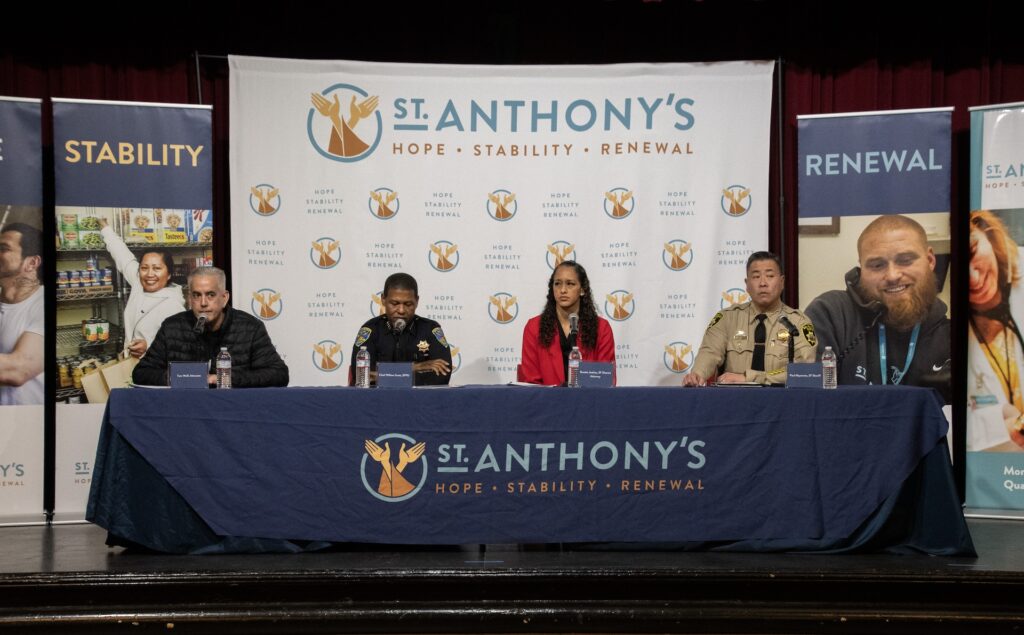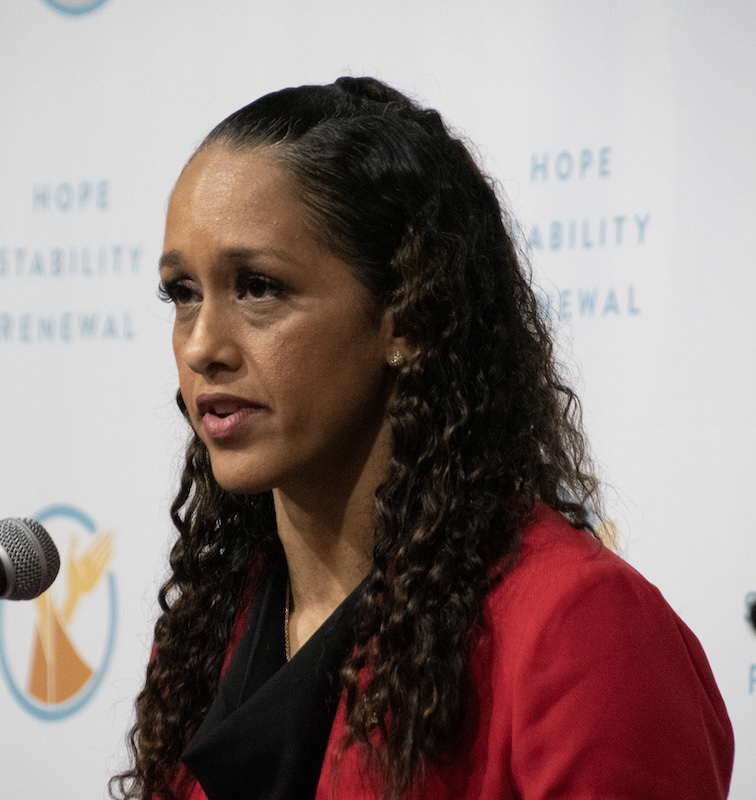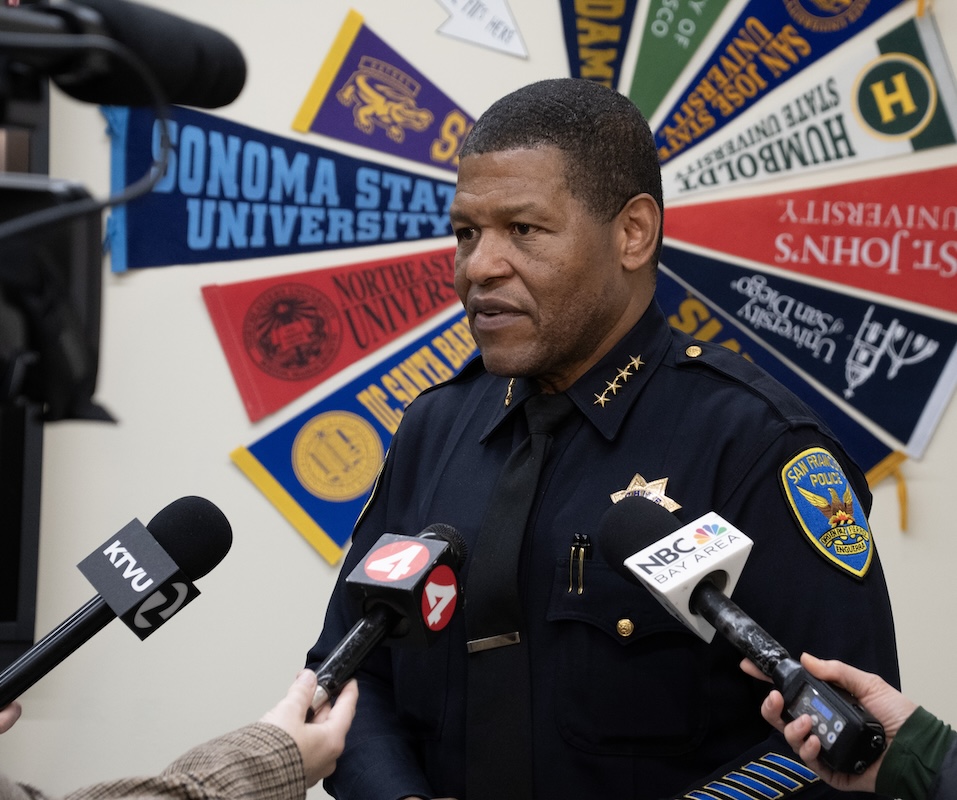Public Safety Town Hall Inspires Optimism and Hope for the Future as Community Comes Together to Discuss Neighborhood Crime
PRESS RELEASE
Media Contact:
Sally Haims | Chief Marketing and Communications Officer
(415) 254-5884 | SHaims@stanthonysf.org
St. Anthony Foundation Interim CEO, Bryan Young, and community leaders hosted a follow-up meeting to the August 4, 2023, Town Hall to seek solutions to multiple shootings and drug crime in the immediate vicinity of the Golden Gate Greenway. Panel guests included SF DA Brooke Jenkins, SFPD Chief William Scott, and SF Sheriff Paul Miyamoto.

SAN FRANCISCO, Calif. (January 25, 2024) – St. Anthony Foundation, committed to providing pathways to stability for thousands of San Franciscans in need annually, hosted a Public Safety Town Hall in the Tenderloin neighborhood as a follow-up to the forum hosted last August. The event was prompted by St. Anthony’s to facilitate community discussions and propel solutions, following increased shootings in the neighborhood.
The panel featured Police Chief William (Bill) Scott, SF DA Brooke Jenkins, Sheriff Paul Miyamoto, and moderator and advocate Tom Wolf. Leaders detailed collaborative plans to tackle illegal drug trade, drug overdose deaths which increased significantly in 2023, and the persistent crime in the area. They also explained that many dealers have been taken off the streets in the last year and acknowledged Urban Alchemy and Code Tenderloin for their good work.
The meeting opened with a strong emphasis on collaboration between the San Francisco Police Department and the community. Chief Scott highlighted the need for continued partnership, stating, “We stay in our lane but we’re working towards the same thing – a safer community.” This sentiment set the tone for a night focused on collective action and mutual support.
Sheriff Miyamoto and Chief Scott provided updates on their departments’ collaborative efforts to address drug-related issues in the community. They emphasized a multifaceted approach, combining uniformed and plainclothes officers to curtail open-air drug sales and use. A significant increase in jail populations attributable to these efforts was noted. They also focused on rehabilitating incarcerated individuals with substance use disorders, aiming to alter behaviors and reduce recidivism, but most do not agree to treatment. These efforts reflect a broader strategy to balance enforcement with rehabilitation, but with a 30% increase in the incarcerated population due to increased arrests of drug-users and dealers, resource constraints make this extremely difficult to achieve.

DA Jenkins elaborated on collaborative efforts with federal prosecutors and the U.S. Attorney’s Office. “We developed a joint prosecution strategy, something this city has not seen in decades,” she said. This strategy aims to expand federal prosecution of street-level drug dealers. She explained that this leads to more stringent consequences than state-level prosecution.
Questions were raised about the significant improvements seen in the Tenderloin during the Asia Pacific Economic Cooperation (APEC) conference held last November. They noted cleaner and safer streets compared to current conditions. Panelists noted the tremendous level of resources and multi-agency coordination that were devoted to security and appearance for the high-profile event. Chief Scott stated that over 1,000 extra officers assisted, which allowed for increased enforcement and engagement. However, the Chief emphasized such vast deployments are unsustainable from cost and human resource perspectives. Officers cannot realistically work such extensive overtime indefinitely without respite.
DA Jenkins also highlighted the temporary shelters established for APEC, which created hundreds more beds for the unhoused, as City departments could compel people off streets given security risks. However, DA Jenkins stated that without the associated legal protections and funding, the City cannot forcibly displace unhoused residents long-term without providing alternative indoor shelter space. The panel made clear that while APEC progress gave hope, restoring neighborhood livability relies on sustainable solutions through continued interagency collaboration and public engagement.

Neighbors had the opportunity to ask questions, where the main concerns were about open-air drug markets, narcotics enforcement, public health and keeping residents safe. The panel responded to these concerns with their departmental tactics which emphasize productive inter-agency coordination. Their plans targeted the drug trade as addressing the root of most of the problem, and they highlighted the fact that they have significantly increased arrests and prosecution of drug dealers, but that it is difficult to ensure they actually show up to court. With over 400 charged drug dealers allowed to re-enter society while awaiting trial, it is impossible for law enforcement to track everyone.
Below are a list of key discussion topics and takeaways:
- Enhanced Law Enforcement Collaboration: Chief Scott and Sheriff Miyamoto emphasized the importance of cooperation between the San Francisco Police Department and the community.Updates on efforts to combat drug-related issues were shared, including a notable increase in departmental participation.
- Progress in Crime Reduction: Significant strides have been made in reducing drug-related crimes, though challenges remain.
- Joint Prosecution Strategy: DA Jenkins detailed the partnership with federal prosecutors and the U.S. Attorney’s Office.The strategy focuses on expanding federal prosecution of street-level drug dealers.
- Community’s Critical Role: DA Jenkins highlighted the necessity of community involvement and proactive engagement.
- Challenges and Resource Constraints: Despite progress, officials acknowledged the challenges in sustaining efforts, particularly due to limited resources.
In closing remarks, the panel recapped key takeaways and a way forward to improve neighborhood safety and wellness. They stressed the importance of open communication, getting out to vote, and sharing community stories of success with local media. The discussion concluded with a sense of dedication and hope, emphasizing joint efforts to create a more livable environment for everyone in the community, especially the more than 3,000 children that call the Tenderloin home. Thank you to St. Anthony Interim CEO Bryan Young for speaking from the heart and holding our leaders accountable.
To read and view coverage of the Town Hall, visit the News section of our website by clicking the link: In the News | St. Anthony’s (stanthonysf.org).
About St. Anthony Foundation
In the Tenderloin’s struggle with poverty, addiction, and mental illness, St. Anthony Foundation has been a beacon of consistency, companionship, and caring for more than 70 years. We provide our guests with a range of services—from a place to rest or take a shower, clothing, and addiction recovery, to meals, medical care, and workforce development. At St. Anthony’s, we take a different approach, one that delivers meaningful results — Hope. Stability. Renewal.
###













































